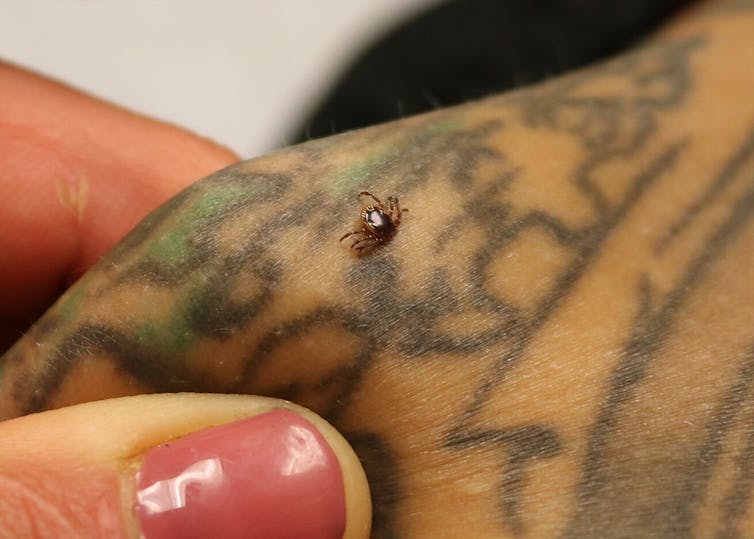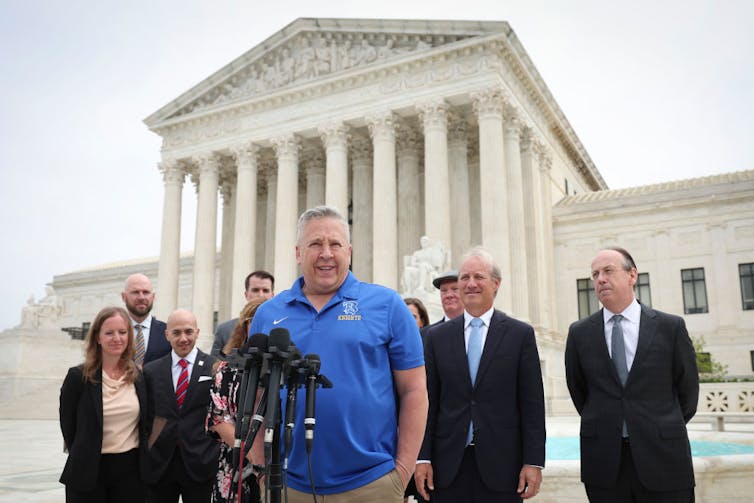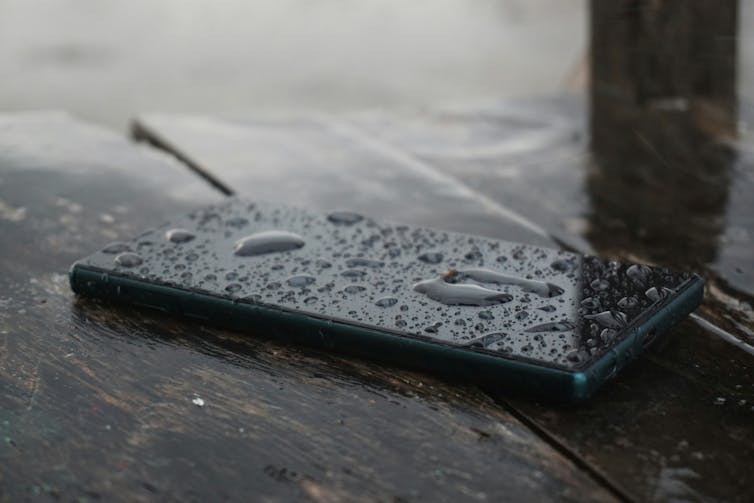Source: The Conversation – UK – By Sabrina Fitzsimons, Co-Director of DCU CREATE (Centre for Collaborative Research Across Teacher Education), Lecturer in Education, Dublin City University

Tense, overworked employees everywhere will recognise the features of burnout: exhaustion, depersonalisation (feeling detached from others or yourself in the workplace) and a reduced sense of personal accomplishment. It happens when chronic workplace stress isn’t managed appropriately.
At the other end of the stress spectrum is rustout. You may well have experienced it. This is when employees become bored, apathetic and unmotivated, often doing the minimum necessary work. This can result in them procrastinating, browsing social media or looking for something more stimulating elsewhere.
Rustout is mental and emotional decline caused by repetitive, mundane tasks and ongoing professional stagnation. Unlike burnout, which results from work overload, rustout arises from underutilisation and a lack of stimulating work.
It can be amplified when a workplace values efficiency and meeting specific outcomes over professional engagement, leaving people feeling invisible or replaceable. In other words, it occurs when people are not challenged enough.
It may sound like a strange complaint to those who would love to think about work a little bit less. But in the long run, it has the potential to lead to career dissatisfaction and may have an impact on mental health.
Yet, within many occupations, rustout remains an unspoken issue. Perhaps this is due to an unofficial expectation that work is supposed to be boring.
Our research explored rustout in a particular profession: teacher educators. These are university lecturers who teach trainee teachers. We surveyed 154 teacher educators and carried out follow-up interviews with 14 of them.
While most described enjoying their work and its variety, we found an undercurrent of symptoms and experiences indicative of rustout. We believe our findings may have resonance with other occupational settings.
Rustout may sound a bit like the social media trend of quiet quitting. However, the teacher educators we spoke to were not deliberately stepping back from their duties or plotting their exit. In fact, they remained highly committed to their students – making their situation even more frustrating.
They often saw it as a vocation and took pride in guiding new teachers into the profession. Many spoke of the joy it was possible to find in their work and the many brilliant, inspiring young people they had helped to nurture. However, some had lost this enthusiasm.
Ever-growing piles of paperwork forced their focus away from what they enjoyed. Crucially, there was a sense that it was no longer the job they had signed up for.
Focus on teacher educators
Teacher educators in higher education balance multiple responsibilities: teaching, supervising their students’ teaching placements, mentoring, and extensive administrative work. These demands leave little space for engagement with research, which is increasingly valued in metrics-driven universities.
We found that the bureaucratisation of higher education in Ireland and the UK has led to excessive paperwork, compliance tasks, and constant system changes. One teacher educator told us: “A good 70% of my workload now is almost just admin, which is very depressing.”
Combined, these can leave little time for the more creative or professionally enriching aspects of the role, such as curriculum design, teaching or research. “I often feel I have produced nothing at the end of the week, and there is no sense of development,” one said.

Nattakorn_Maneerat/Shutterstock
Rustout can also occur when there is a misalignment between professional aspirations and job demands. For example, in our study, some highly qualified teacher educators with significant experience in research, leadership and teaching felt dragged down by repetitive, low-value tasks rather than work that aligned with their expertise.
As one said: “People can be pigeon-holed into a role, and they are left in that comfort zone rather than being challenged or invited to try something that might stimulate or get the creative juices flowing.” Some may be happy to sit with rustout for some time, but being stuck in this situation can lead to professional dissatisfaction.
Restricted professional growth can lead to feelings of rustout. This includes limited opportunities for career mobility, rigid structures, and a lack of workplace career support.
If employees are seen as a “safe pair of hands” who can keep the operation moving, their professional satisfaction is not addressed. “The conversation doesn’t happen; it’s just ‘Did you get the job done’,” one teacher educator said. “It’s not about work satisfaction; you are lucky to have your job.”
Hidden costs of rustout
Rustout has both personal and institutional consequences. On an individual level, it leads to disengagement, apathy and reduced motivation. One said they were “functioning without thriving,” with repetitive tasks eroding their sense of purpose.
Many teacher educators said they were unable to discuss dissatisfaction due to workplace culture and performance expectations. “Rustout exists in teacher education. Absolutely. However, I have no experience of ever having a conversation with anyone around it,” one said.
This may be because it suits everyone not to talk about it. Nothing is being rocked when staff are working and doing their jobs. This silence benefits institutions in the short term, since it maintains stability and delays difficult conversations. However, in the long term, it can contribute to retention issues, a negative workplace culture and possibly reduced innovation.
We believe rustout should be put on the mental health agenda in workplaces, just as burnout is. Employers must acknowledge that the wellbeing of their employees is integral to overall success.
![]()
The authors do not work for, consult, own shares in or receive funding from any company or organisation that would benefit from this article, and have disclosed no relevant affiliations beyond their academic appointment.
– ref. Feeling unstimulated and apathetic at work? You might be experiencing rustout – https://theconversation.com/feeling-unstimulated-and-apathetic-at-work-you-might-be-experiencing-rustout-260837


















